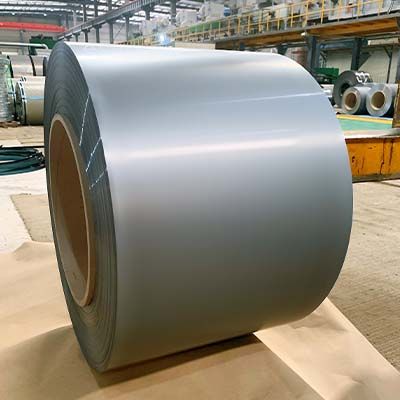In electrical engineering and power distribution, laminated silicon steel sheets play a crucial role. These sheets are widely used in constructing electrical transformers, motors, and generators. Their unique properties make them an ideal choice for applications that require low core losses, high magnetic permeability, and excellent electrical resistance. And this article aims to provide a comprehensive understanding of laminated silicon steel sheets.
Composition of The Laminated Silicon Steel Sheet
Laminated silicon steel sheets, also known as electrical steel or transformer steel, are primarily composed of iron and silicon. The sheets are created by coating a layer of silicon oxide on the surface of high-quality steel, which helps in reducing the eddy currents that can be generated in the core material.
The silicon content in the laminated silicon steel sheet is carefully controlled to achieve desirable magnetic properties. Typically, the silicon content ranges from 2% to 3.5%, as this concentration ensures optimal magnetic permeability and low core losses.
Properties that Make a Difference
High Magnetic Permeability: Laminated silicon steel sheets exhibit high magnetic permeability, which allows them to channel and direct magnetic flux efficiently. This property is crucial in applications such as transformers and motors, where magnetic field control is essential.
Low Core Losses: The silicon coating on the steel surface reduces the eddy currents, resulting in low core losses. This property ensures efficient energy transfer and reduces heat generation, making laminated silicon steel sheets an ideal choice for energy-efficient devices.
Electrical Resistance: Laminated silicon steel sheets exhibit excellent electrical resistance, preventing unwanted current leakage and ensuring reliable performance in electrical equipment.
High Saturation Flux Density: These sheets have a high saturation flux density, enabling them to store a significant amount of magnetic energy. This property is crucial in applications that require rapid and efficient magnetization, such as electric generators.
Lamination: The sheets are manufactured with a specific lamination process, which involves stacking individual layers of silicon steel with insulating coatings. This lamination minimizes the formation of eddy currents, further reducing core losses and improving overall efficiency.
Manufacturing Process of Laminated Silicon Steel Sheets
Raw Material Selection: High-quality steel with low impurity content is selected as the base material for laminated silicon steel sheets. The composition and quality of the steel significantly impact the magnetic properties of the final product.
Surface Treatment: The steel sheets undergo surface treatment, which includes the application of silicon oxide layers. This treatment reduces the formation of eddy currents and enhances the magnetic properties.
Annealing: The sheets are subjected to annealing, a process that involves heating the material to a specific temperature and then gradually cooling it. Annealing optimizes the magnetic properties and relieves any stresses induced during the manufacturing process.
Lamination: The individual sheets are stacked together with insulating coatings in between. This lamination process prevents the formation of eddy currents within the core material.
Cutting and Shaping: The laminated sheets are cut and shaped into the desired dimensions for various applications. The sheets can be further processed to create transformer cores, motor laminations, or other specific components.
Applications of Laminated Silicon Steel Sheets
Transformers: Laminated silicon steel sheets are widely used in power and distribution transformers. Their low core losses and high magnetic permeability ensure efficient energy transfer and minimize heat generation.
Electric Motors and Generators: These sheets serve as the core material in electric motors and generators. The high saturation flux density and low core losses make them ideal for converting electrical energy into mechanical energy.
Inductors and Chokes: Laminated silicon steel sheets are employed in inductors and chokes for energy storage and filtering applications. Their magnetic properties allow precise control of inductance and minimize energy losses.
Appliances and Electronics: Various household appliances, such as refrigerators and air conditioners, utilize laminated silicon steel sheets in their motors and compressors. The sheets enable efficient operation and contribute to energy savings.
Renewable Energy Systems: Laminated silicon steel sheets are vital components in wind turbines and solar inverters. Their magnetic properties ensure optimal power generation and efficient conversion of renewable energy.
Conclusion
Laminated silicon steel sheets are at the core of modern electrical engineering, providing crucial magnetic properties for efficient energy transfer and reduced losses. With high magnetic permeability, low core losses, and excellent electrical resistance, they find diverse applications in transformers, motors, and renewable energy systems.






